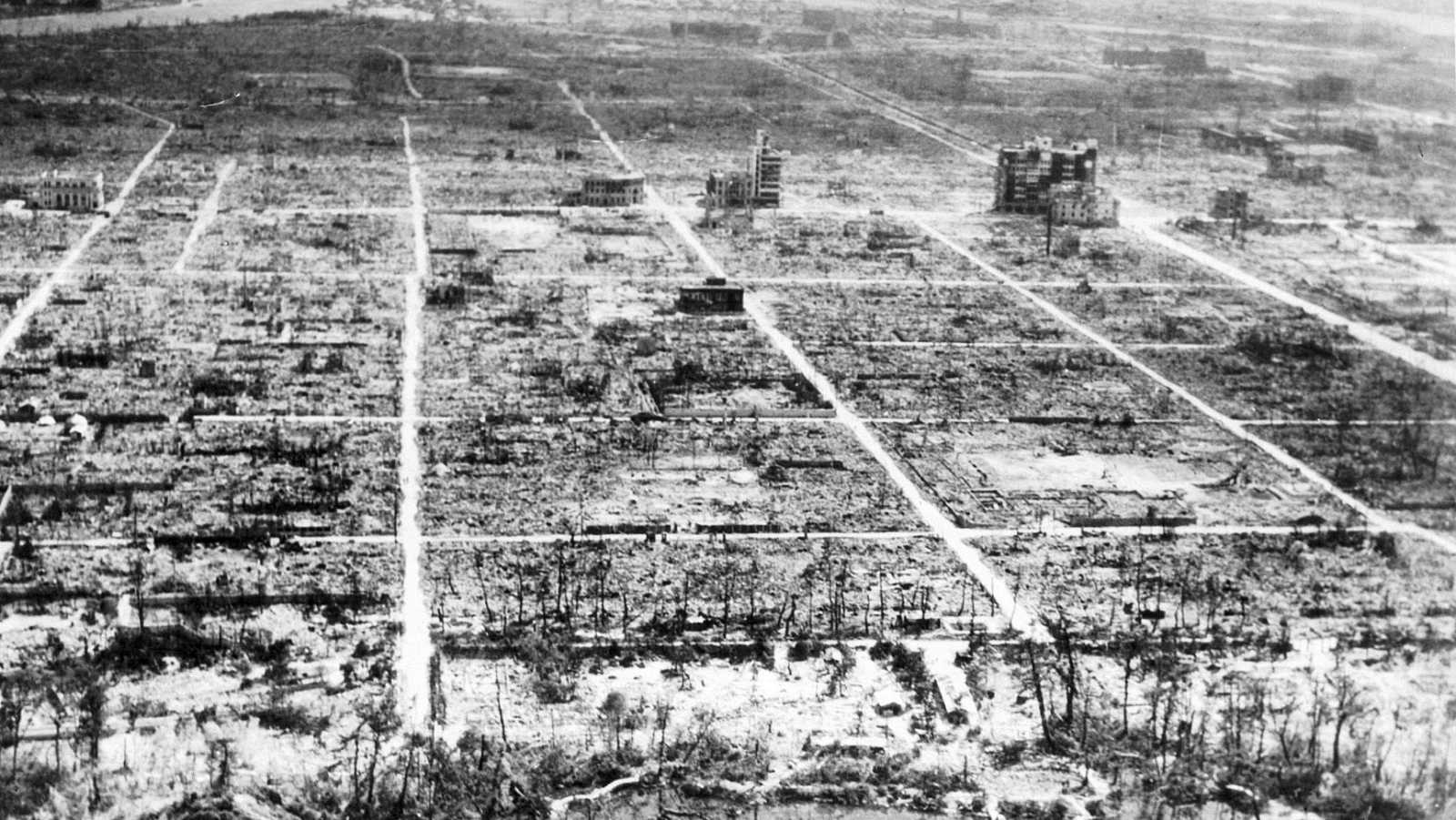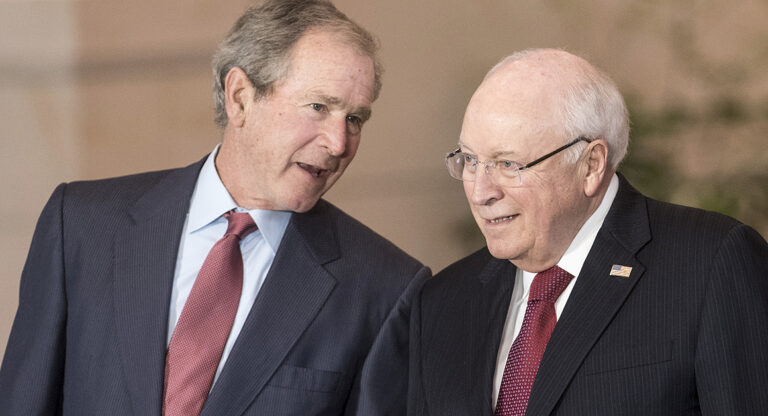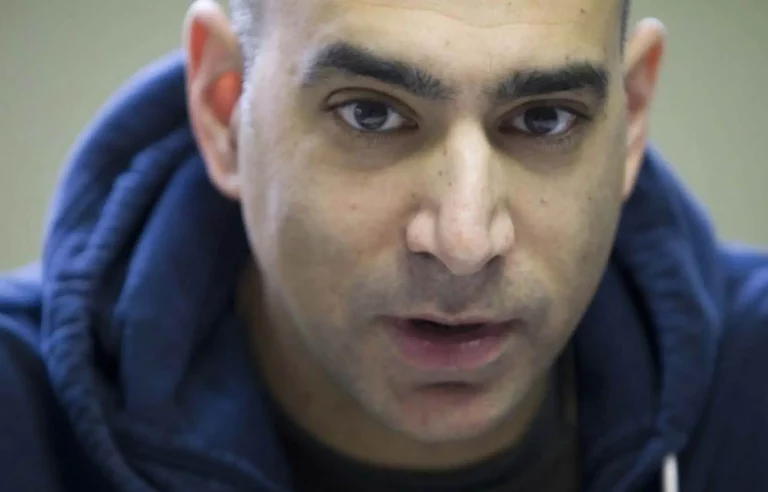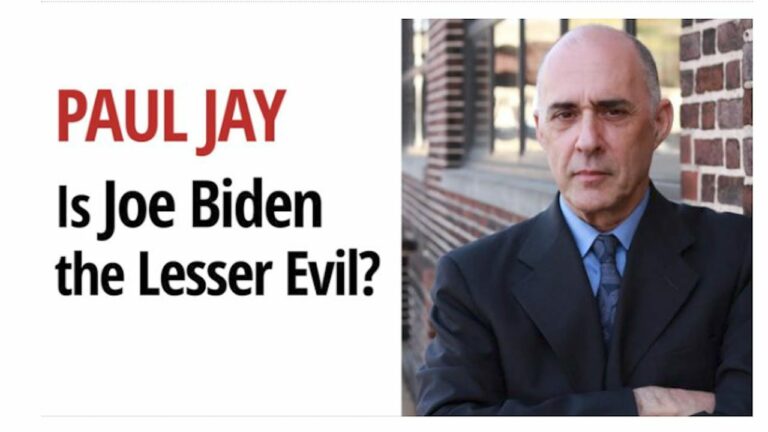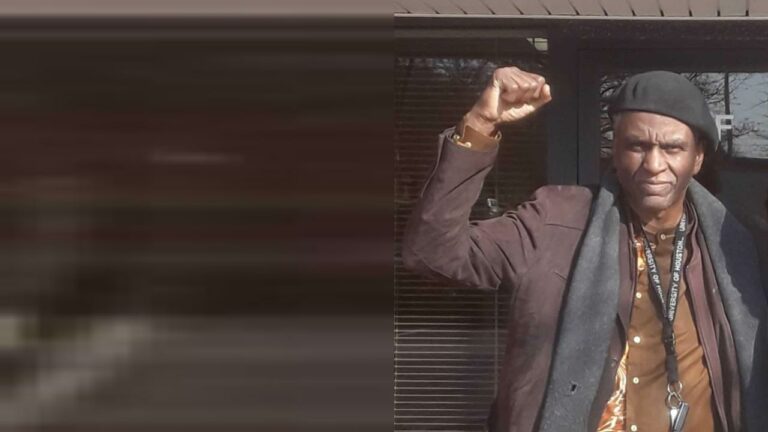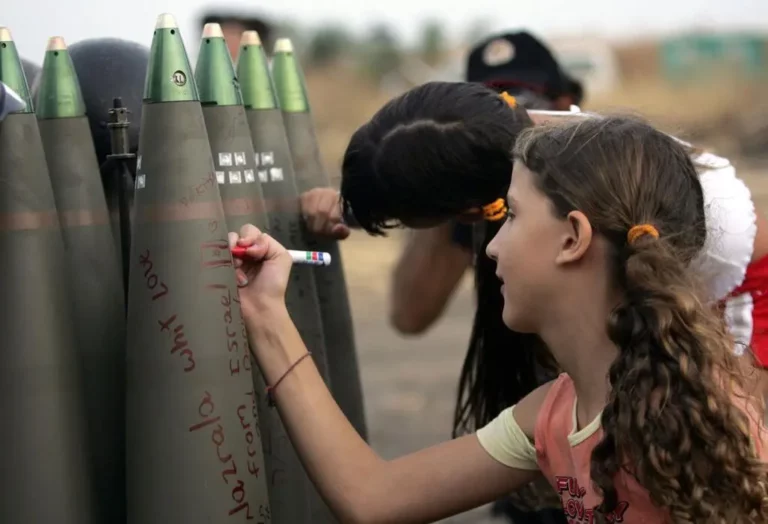In Hiroshima, Obama Neglects to Mention $1 Trillion Deal for Nuclear Weapons – Kuznick RAI (pt 2/2)
This is an episode of Reality Asserts Itself, produced on June 10, 2016. Peter Kuznick, the co-author of The Untold History of the United States, spoke to Paul Jay about the significance of the vice presidency of Henry Wallace, who served in the administration of Franklin D. Roosevelt in the context of the Bernie Sanders campaign.
PAUL JAY, SENIOR EDITOR, TRNN: Welcome back to Reality Asserts Itself. I’m Paul Jay and this is The Real News Network. We’re continuing our discussion with Peter Kuznick about President Obama’s visit to Hiroshima. Peter joins us from Washington, D.C., where he’s the director of Nuclear Studies Institute at the American University. He’s the cowriter with Oliver Stone of The Untold History of the United States, and he’s coauthor with Akira Kimura of Rethinking the Atomic Bombings of Hiroshima and Nagasaki: Japanese and American Perspectives. Thanks for joining us, Peter.
PETER KUZNICK, HISTORY PROFESSOR, AMERICAN UNIVERSITY: Glad to be here, Paul.
JAY: So what else should President Obama have said and what else did he say that perhaps he shouldn’t have?
KUZNICK: Well, there are a lot of things that Obama could have and should have said and done. In fact, 75 leading scholars and activists wrote a letter to President Obama prior to his trip laying out some of the things that we hoped he would do and say. First we said that he should meet with all the hibakusha, all the survivors who would like to meet with him and he should listen to them. I know when I take my students to Hiroshima and Nagasaki every summer–as I’ve done for the past 20 years–that the most powerful thing that they experienced is the time they spent with the survivors. The survivors have a message that goes beyond revenge for what happened in Hiroshima and Nagasaki. They’ve been actually leading the international campaign for nuclear abolition. They’ve spent their lifetimes doing this. And what they say is that what’s most important to them is to see nuclear abolition in their lifetime. I had dinner with several of the leading members of Nihon Hidankyo, the survivors organization, and they expressed real disappointment, profound disappointment with Obama’s visit [incompr.] what Obama said and what Obama didn’t say. Obama has some lofty principles, and he’s very articulate and eloquent, as he usually is, and made some great universal appeals there, but in terms of the specifics of what he said, he didn’t address what he needed to address. Number one, he didn’t call for any cutback, a unilateral cutback in America’s nuclear arsenal. Number two, he didn’t revoke or in any way amend America’s $1 trillion nuclear modernization program. We say it’s going to be $1 trillion over the next three decades. We know with the cost overruns that always happens in these programs that it’s going to be far more than $1 trillion. What Obama has proposed—ou have to go back to his Prague speech in spring 2009. He won the Nobel Peace Prize for that speech. He called for nuclear abolition. But again here, actually, his programs in recent years have been for nuclear expansion, making the arsenal more efficient and making the arsenal more useable. That’s Obama’s real, tragic legacy is a contradiction of what he had called for. And so in this talk he doesn’t call for revoking this nuclear modernization, which is going to keep nuclear weapons as the centerpiece of America’s defense policy for at least the next three decades. He’s calling for upgrading and modernizing every single element within America’s nuclear arsenal. It’s very, very dangerous. And the other thing that he said in this speech, repeating something that he said in Prague, is that the nuclear abolition might not happen in his lifetime. That is not what the hibakusha wanted to hear and it’s not what I wanted to hear or my colleagues wanted to hear. We want Obama to take concrete steps now. The hibakushas’ goal is to see nuclear weapons abolished in their lifetime. There’s a split among the survivors in Japan. On the one hand, you’ve got a group of survivors that just wanted Obama to come and didn’t care about an apology–just the fact that he went there was enough. And they dream about abolition in the abstract. But then you’ve got another group of survivors (hibakusha) who want to see concrete steps taken now, in their lifetime, by Obama to do this. And those were the ones who were most disappointed. If you remember the visuals there, Obama after his talk–and initially he was going to talk for five minutes and ended up talking for 17 minutes, so it was a much more substantial talk. But then he went ahead and shook hands with two of the survivors. This was heavily scripted. They were positioned so that Obama would talk to them and only them. The first was a man named Tsuboi. He’s the head of Hidankyo in Hiroshima. Nice fellow, but very, very moderate. Before Obama’s visit he was interviewed several times and he said, we don’t want an apology. He was not speaking for most of the survivors. So he went ahead and shook hands with Tsuboi, who was known to be very moderate and just appreciative that Obama was there. Then he went and spoke to a Mr. Mori. Mori’s a very interesting figure. He was a survivor of the atomic bombing, and he’s spent his entire career since then apologizing for the American POWs who were killed in the bombing. He was invited there by the Americans, not the city of Hiroshima, and he’s basically persona non grata among the survivors in Hiroshima because he’s such an apologist for the U.S. policy and one who has not expressed his compassion for the Japanese victims, but only for the American victims. But if we saw, looked closely, seated in the third row were Tanaka-san and Iwasa-san, who are the real leaders of Nihon Hidankyo, who are much more militant. And they were put in the third row, Tanaka-san told me, to make sure that they could not lean in when Obama was speaking to the other hibakusha, who the American officials knew would just be totally appreciative that he was there. And then Mori-san breaks down and starts crying, and Obama embraces him, and it’s a lovely moment. But people don’t really know the back story to this. Like anything else, Obama’s trip–for example, one of the upshots of the trip was that he was there with Prime Minister Abe. Abe is an extreme right-wing [militarist], an historical falsifier and denier. And Abe was going to benefit from Obama’s trip. To me I think it’s been scandalous that Abe even comes to the August 6 and August 9 commemorative events. But he was there with Obama, and Obama used him in order to push Obama and Abe’s pivot policy, the containment policy of China. And one of the outcomes was that Abe, in advance of the upcoming elections in Japan, just got a 7 percent boost in popularity. And that was deliberate and it was known and we anticipated that was going to happen. So Obama was actually, on the one hand, furthering his own nuclear modernization program and doing it in the same way (if you’ve got time) that Eisenhower did with his “Atoms for Peace” program. People might recall Eisenhower’s December 1953 address to the United Nations, in which he proposes the peaceful atom there. He was told by his advisers that he had to sell the peaceful atom if he wanted to be able to push his nuclear proliferation program. You have to remember that under Eisenhower we went from little more than 1,000 nuclear weapons when he was elected to 30,000 nuclear weapons by the time his budgeting cycle was finished, two years into the Kennedy administration. They went from one finger on the nuclear button to scores of fingers on the nuclear button, nuclear weapons being our last resort to nuclear weapons being our first resort. But in order to sell that policy at a time when the rest of the world–for example, Nehru said that the American leaders are “self-centered lunatics” who want to blow up the world, and that was the attitude throughout much of the world about the U.S. nuclear policies in the 1950s. But Eisenhower was told he could sell those policies or get them to be accepted if he pushed the peaceful atom–nuclear energy, nuclear transport, you know, energy too cheap to meter. And that’s what he did. In some ways Obama’s visit inadvertently (and I don’t think Obama’s quite that calculating) is having the same effect under the cover of going to Hiroshima and being a man of peace and a Nobel prize winner: actually giving more credibility to his nuclear modernization, giving more credibility to his Asia pivot.
JAY: The thing is about nuclear modernization and putting $1 trillion into nuclear weapons, it’s only a meaningful deterrent or weapon meant to be deterrent in theory if people think you’ll use it, which means you can’t denounce Hiroshima and Nagasaki, the bombing of those civilian cities. In fact, you have to almost hold it up, to show the world, look, we’re willing to kill hundreds of thousands of people to achieve a foreign policy objective. So if we put $1 trillion into more weapons, don’t ever forget this.
KUZNICK: That’s exactly the message–that’s one of the messages. The other message is that there’s never going to be nuclear abolition. In fact, we’re fighting the Marshall Islands. The Marshall Islands are suing internationally now to enforce Article 6 of the Non-Proliferation Treaty, which says that the nuclear powers have got to eliminate their nuclear arsenals quickly. And this has been, since that was put into effect, 34 years, and we’re not making any progress toward abolishing–or, actually, 44 years, and not making any progress toward abolishing [crosstalk]
JAY: And the other point to be made here is the other two major nuclear powers, Russia and China, are not even close to America’s current weaponry, never mind what it would be after this new $1 trillion investment.
KUZNICK: And the Russians are refusing to cut their nuclear arsenal any deeper, because they know that the United States is so dominant in conventional weaponry. What we’re going to need is a broader international deescalation and demilitarization. But the Asia pivot policy is the opposite. We’ve been pushing all of the Asian countries surrounding China to increase their arms sales. But, as you know, a couple of years ago the U.S. had sold 77 percent of all the arms that were sold internationally, and there’s been a massive increase in arms sales to all the other countries. And the big upshot of Obama’s visit to Vietnam was to say that now the United States can sell arms to Vietnam. He legitimized that. So we’re going the wrong direction with all of these policies.
JAY: And we’ve been talking a lot about President Obama. Do you see any difference between (in all likelihood) a President Clinton–or a President Trump, for that matter–given that Clinton is saying she’s the real defender of the Obama legacy? Do you see any difference in what approach she might take to these issues?
KUZNICK: Clinton has been more hawkish and more militant and to the right of Obama on every significant issue so far. When it came to the troop buildup in Afghanistan, Clinton was pushing, along with Petraeus and McChrystal and Gates, for a 40,000 troop increase there. The doves in the administration like Biden were pushing for a 10,000 troop increase. And Obama was told that his top military brass might all resign if he didn’t go for a big increase. So he finally agreed on 30,000. He knew that was wrong, and he didn’t want to do it, but he went ahead and did it. Clinton has been so hawkish it’s hard to find a war that Clinton has not supported. I think she’s more hawkish than her husband, far more hawkish than Obama. We don’t know if she’s more hawkish than Trump ’cause we don’t know what Trump would ever do–he’s on all sides of every issue. Some of the things he says make sense, and then he says things that are absolutely lunacy. He talks about nuclear-arming Saudi Arabia and South Korea and Japan. That kind of stuff is completely insane. So I think if those are the two choices, we’re in deep trouble either way it goes.
JAY: Alright. Thanks for joining us, Peter.
KUZNICK: Thank you, Paul.
JAY: And thank you for joining us on Reality Asserts Itself on The Real News Network.
“Peter Kuznick is a professor of history and director of the award-winning Nuclear Studies Institute at American University and is currently serving his sixth three-year term as a distinguished lecturer with the Organization of American Historians. He has written extensively about science and politics, nuclear history, and Cold War culture.”
